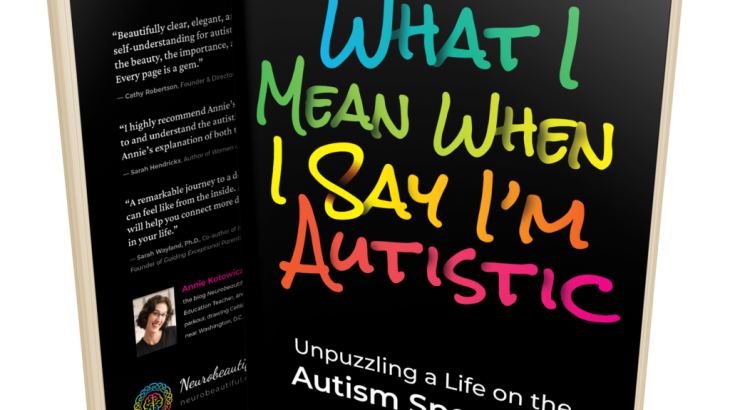Autism from the inside out
Autistic author Annie Kotowicz invites neurotypical readers to enter her world. Her writing is both concise and personal. She explains her neurodivergent traits from a biological standpoint, then provides clarifying examples from her own life. I found the book enjoyable reading. Kotowicz covers several neurodivergent challenges including sensory differences, relationships, and misunderstandings. She then shares the beauty of autism and why she wouldn’t wish to be otherwise.
Sensitivity
Kotowicz shares both the value and discomfort involved in senses that fall outside the average. Like most people with autism, she hears above and below the normal range of human hearing, in both volume and range. She smells things others can’t detect. Her skin feels impacts and temperatures more acutely. Lights of various kinds cause distress. I especially appreciated her explanation of how she is extremely productive in her work if she protects herself from this onslaught. Conversely, if she can’t get away from sensory overload, she’ll eventually run away, meltdown (cry, scream, stim), or even self-harm to escape. The “strange behaviors” associated with autism are often a “normal” reaction to being tortured. The disturbing behaviors disappear with the removal of the cause. Reading this book prepares neurotypical people like myself to be more aware of environmental stressors that we wouldn’t usually notice. Heightened sensitivity also explains the enraptured state that music or nature can induce — the autistic person actually hears and sees more deeply than the average observer.
Relationships
Relationships with other people often present a huge challenge for people on the autism spectrum. Kotowisc does a great job of explaining how she gets along with neurotypical people by masking her autistic traits and mimicking the facial expressions, body language, and vocal intonation of neurotypical peers as far as possible. This takes a tremendous amount of energy to pull off. Thankfully, she has neurodivergent friends amongst whom she can completely relax, and a boyfriend who understands and celebrates her differences.
Misunderstandings
Kotowicz thinks most autistic people are misunderstood most of the time. Here’s one example from her own life. “In grocery stores, it takes all of my attention to successfully navigate my cart without running into people, while also making decisions and dealing with all the audio and visual information. It’s hard to do all that and also make eye contact and smile, so my default demeanor could easily be perceived as rude. I wish everyone understood that my actions reflect what’s happening in my senses not what’s happening in my heart. To be fair, if a neurotypical person acted like me in the grocery store it would likely mean that they were feeling annoyed—but the same action can have a different meaning for different neurotypes.”
Beauty
Beauty lies in the eyes and ears of beholders; thus Kotowicz declares that autistic brains are beautiful to those who know what to look for. She revels in the way she experiences music and hugs, among many other examples. Far from tragic, autistic people bring valuable gifts to the world when allowed to be themselves in a sensory-safe environment. Kotowicz would not want to be non-autistic, because then she wouldn’t be herself, nor could she bring such precision to her work.
Insight into Autism
Many autistic people are unable to communicate in the clear way Kotowicz can, but their experiences may yet resonate with hers. I found this book a valuable and readable resource to improve my understanding of the autistic experience. I highly recommend What I Mean When I Say I’m Autistic, by Annie Kotowicz!
Book Review 11/28/2023 by Yvonna Graham, M.Ed. www.dyslexiakit.net
